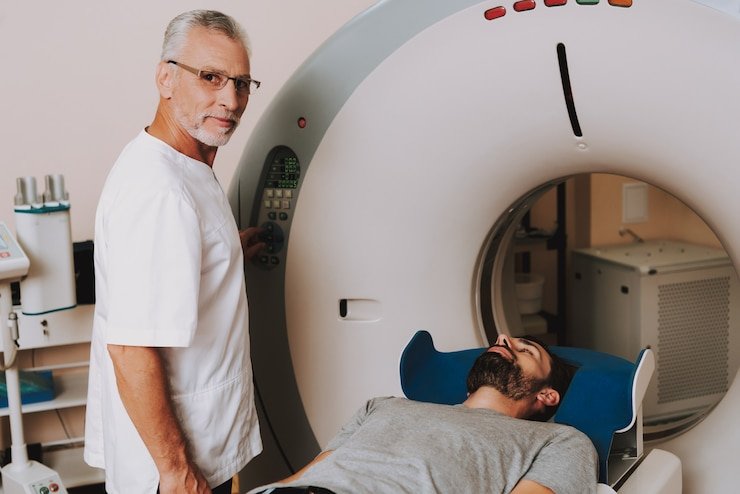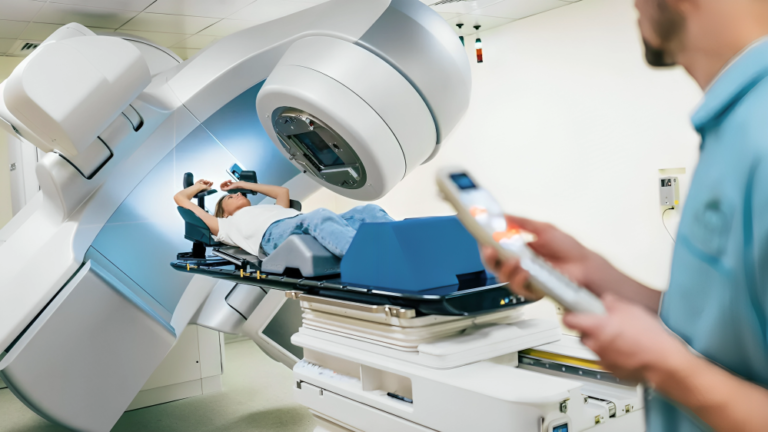Harnessing the Power of Precision: An In-Depth Look at Radiation Therapy.
In the realm of cancer treatment, radiation therapy stands as a powerful and indispensable tool. This sophisticated medical technique utilizes high doses of radiation to target and destroy cancer cells, offering hope and healing to countless individuals around the world. This article explores the intricacies of radiation therapy, shedding light on its principles, various modalities, and the profound impact it has in the fight against cancer.
To Know More About It Please Click Here
Understanding Radiation Therapy
Radiation therapy, also known as radiotherapy, involves the use of high-energy particles or waves to target and damage the DNA inside cancer cells, preventing their ability to grow and divide. The goal is to eliminate or shrink tumors while minimizing damage to surrounding healthy tissues. Radiation therapy may be used as a standalone treatment or in combination with surgery, chemotherapy, or immunotherapy, depending on the type and stage of cancer.
Types of Radiation Therapy
- External Beam Radiation:
- This is the most common form of radiation therapy, where a machine outside the body directs high-energy beams precisely at the tumor.
- Advanced technologies such as intensity-modulated radiation therapy (IMRT) and stereotactic radiosurgery enhance precision and minimize damage to surrounding tissues.
- Internal Radiation (Brachytherapy):
- Radioactive sources are placed directly within or very close to the tumor, delivering a targeted dose of radiation.
- Brachytherapy is commonly used in cancers like prostate, cervical, and breast cancer.
- Systemic Radiation:
- Radioactive substances are administered internally, typically through oral medications or intravenous injections.
- This form of radiation therapy is often used for certain types of thyroid cancer.
The Process of Radiation Therapy
- Simulation and Planning:
- Before treatment begins, precise measurements and imaging are conducted to determine the exact position and size of the tumor.
- Treatment plans are tailored to each patient’s unique anatomy.
- Treatment Sessions:
- Patients typically undergo daily sessions of radiation therapy over a specified period.
- Each session is relatively short, and the entire course of treatment may last several weeks.
- Monitoring and Adjustments:
- Patients are closely monitored throughout the treatment course, and adjustments may be made to the treatment plan if necessary.
- Regular follow-up appointments allow healthcare professionals to assess the treatment’s effectiveness and manage any side effects.
Benefits and Considerations
Radiation therapy offers several benefits, including:
- Localized Treatment: Precise targeting minimizes damage to healthy tissues.
- Curative and Palliative: It can be used with curative intent or to alleviate symptoms in advanced cases.
- Adaptability: It can be combined with other treatment modalities for comprehensive cancer care.
However, potential side effects, such as fatigue, skin changes, and long-term effects, must be carefully managed.
To Know More About It Please Click Here
Conclusion
Radiation therapy plays a crucial role in the multifaceted approach to cancer treatment. As technology advances, the precision and effectiveness of radiation therapy continue to improve, providing renewed hope for patients facing a cancer diagnosis. Through ongoing research and innovations, radiation therapy remains at the forefront of the fight against cancer, offering tailored and impactful solutions to enhance both quantity and quality of life for those undergoing cancer treatment.








